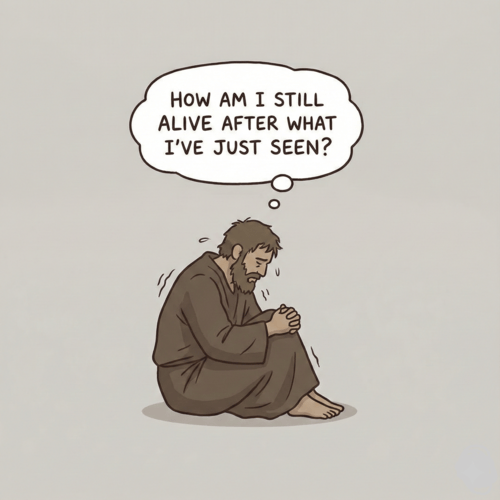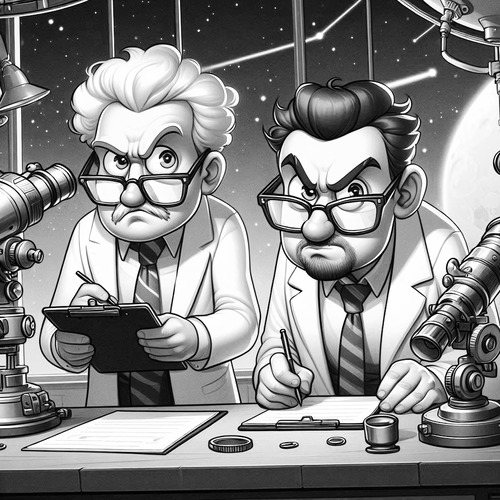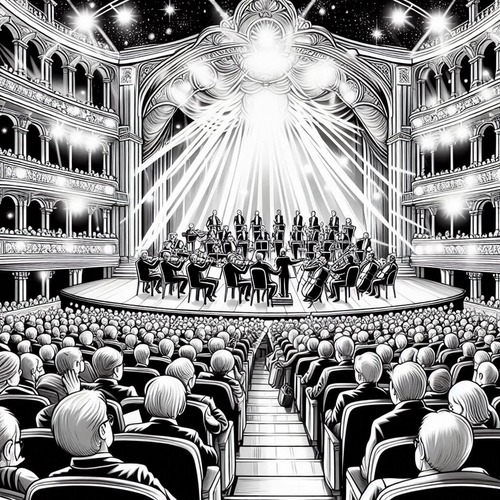Created With Intent: Why the Universe is Vast, Not Wasteful
One of the most common objections to the biblical creation account goes something like this: “If God created the universe specifically for humans, why is over 99.99% of it completely uninhabitable?” It’s a fair question. The vast emptiness of space, the hostile environments of other planets, and the sheer scale of the cosmos can seem wasteful if the purpose was simply to create a home for humanity.
But what if this “uninhabitability” isn’t evidence against creation, but rather compelling evidence for it? Recent scientific discoveries across multiple disciplines suggest the universe’s vastness and seeming inhospitability are actually essential components of a finely-crafted creation.
THE FINE-TUNED UNIVERSE: PRECISION BEYOND CHANCE
The more physicists learn about our universe, the more they discover its remarkable fine-tuning. The fundamental constants of physics—like the gravitational constant, electromagnetic force, and the mass of elementary particles—exist within extraordinarily narrow ranges that permit life to exist. If any of these constants were altered by even a minuscule amount, the universe would not support stars, chemistry, or life.
Recent research from astrophysicist Dr Luke Barnes demonstrates the universe’s “habitability window” is so precise the chance of a random universe supporting life approaches mathematical impossibility. As astronomer Sir Fred Hoyle famously remarked, “A common sense interpretation of the facts suggests a super-intellect has monkeyed with physics.”
This fine-tuning extends to the universe’s size and age. Dr Hugh Ross’s research team at Reasons to Believe has documented how the universe must be precisely the size it is for life-essential elements to form in the correct abundances. In God’s economy, there is no waste—only purpose.
EARTH’S SPECIAL PLACE: PROTECTED BY “UNINHABITABLE” SPACE
Far from being random, Earth’s position in the supposedly “wasteful” cosmos is remarkably privileged. Recent planetary science has only strengthened the case for Earth’s special status.
The “gas giant shield” hypothesis, supported by recent exoplanet research, shows how Jupiter’s massive gravity protects Earth from frequent catastrophic impacts. Our solar system’s position in a galactic “habitable zone” shields us from deadly radiation that would make life impossible in most of the Milky Way. Even our position in the universe gives us a perfect observational window on cosmic structure that has enabled scientific discovery.
Dr Guillermo Gonzalez and Dr Jay Richards documented these remarkable “privileged planet” characteristics, showing how the same conditions that make Earth habitable also make it ideal for scientific discovery—exactly what we would expect if the cosmos were designed by a rational Creator who intended us to explore and understand His work.
THE SIZE OF CREATION: VAST NOT WASTEFUL
From a Reformed perspective, the universe’s vastness directly serves God’s glory. As Psalm 19:1 declares, “The heavens declare the glory of God, and the sky above proclaims his handiwork.” The sheer scale of creation reveals God’s majesty and power in ways a smaller universe could not.
But the size serves practical purposes too. Physicist Dr Gerald Schroeder points out cosmic expansion at precisely the rate we observe is necessary for the universe to cool at the right pace for matter to form into stars and planets. Recent cosmological models show a significantly smaller universe would collapse before life-essential heavy elements could form through stellar nucleosynthesis.
HABITABILITY: EXPANDING DEFINITIONS
Our understanding of what constitutes a “habitable environment” continues to evolve with new discoveries. Recent findings from NASA’s planetary missions have identified potentially habitable environments in places once thought completely hostile to life, such as the subsurface oceans of Europa and Enceladus.
On Earth, extremophile organisms thrive in environments once thought uninhabitable—from near-boiling acidic hot springs to the crushing depths of the ocean and even within solid rock miles below the surface. These discoveries expand our understanding of potential habitability throughout the cosmos.
Dr Stephen Meyer, author of “Return of the God Hypothesis,” points out these discoveries don’t disprove design—they reveal a Creator whose creative capacity exceeds our limited imagination. The Creator may have purposes for these environments beyond current human understanding.
THEOLOGICAL PERSPECTIVE: BEYOND HUMAN HABITATION
Reformed theology reminds us creation serves multiple divine purposes beyond merely providing human habitat. The Westminster Confession affirms the primary purpose of creation is “the manifestation of the glory of His eternal power, wisdom, and goodness.”
Dutch Reformed scholar Abraham Kuyper emphasised every square inch of creation belongs to Christ and serves His purposes—whether inhabited by us or not. Modern Reformed thinkers like Dr Vern Poythress have developed frameworks showing how modern cosmology aligns with biblical creation accounts when we recognise that God’s purposes extend beyond mere functionality for human use.
The Reformed tradition has long recognised that creation exists primarily for God’s glory rather than human utility. As theologian Herman Bavinck wrote, “The cosmos is not simply the workshop of man but also and primarily the revelation of God’s attributes and perfections.”
CONCLUSION: VAST NOT WASTEFUL
What appears as “waste” by human efficiency standards may serve crucial purposes in God’s cosmic design. The vastness and apparent uninhabitability of most of the universe, rather than contradicting creation, actually provides compelling evidence for it. The precise fine-tuning required for life anywhere, Earth’s remarkably privileged position, and the necessary size and age of the universe for its chemistry to work all point to purposeful design rather than random chance.
From a Reformed perspective, we see in the cosmos not a wasteful creation but a masterpiece of divine engineering. The uninhabitable portions serve critical functions—protecting Earth, enabling complex chemistry, demonstrating God’s power, and likely serving purposes beyond our current understanding.
VAST NOT WASTEFUL: RELATED FAQs
How does a young earth creationist explain the apparent age of distant stars and galaxies? The light travel time from distant galaxies appears to contradict a young universe, but several creationist cosmological models address this, including Dr Russell Humphreys’ time dilation theory and Dr Jason Lisle’s anisotropic synchrony convention. These models propose that while God created the universe approximately 6,000 years ago according to Earth time, relativistic effects allowed light from distant stars to reach Earth within that timeframe. The starlight is not an illusion but real and observable due to the Creator’s design of space-time physics specifically to make the cosmos immediately visible to mankind from creation week forward.
- Why would God create potentially habitable exoplanets if we were meant to inhabit only Earth? The recent discoveries of potentially habitable exoplanets don’t necessarily indicate God intended them for human habitation but rather demonstrate His creative abundance and the robust nature of His design principles. The exoplanets serve as a testimony to God’s consistency in applying physical laws throughout the universe He created. Their existence also provides comparative data that highlights Earth’s unique and specially designed features, serving as a control group that emphasises our planet’s exceptional nature within creation.
- How do young earth creationists explain the cosmic microwave background radiation often cited as evidence for the Big Bang? The cosmic microwave background radiation (CMBR) is often presented as proof of a Big Bang, but creationist astrophysicists like Dr John Hartnett suggest it represents the “waters above” mentioned in Genesis 1:7 that form a boundary of the created universe. The remarkable uniformity of the CMBR actually presents significant problems for naturalistic models (the “horizon problem”), while fitting well with a designed universe created mature and functioning. Rather than evidence against creation, the CMBR’s precise characteristics represent another example of fine-tuning that points to intentional design rather than random processes.
- If the universe is only thousands of years old, why do we see supernovas that appear to have exploded millions of years ago? The observation of distant supernovas doesn’t necessarily conflict with a young universe because these stellar explosions could have been created in progress, similar to how Adam was created mature rather than as an infant. Creation scientists like Dr Danny Faulkner suggest God created a fully functioning, mature universe with ongoing processes already in motion, including stars in various stages of their life cycles. Additionally, our understanding of supernova formation rates and timescales relies heavily on uniformitarian assumptions that may not account for accelerated processes during creation week.
What purpose might black holes serve in a created universe with a short timeline? Black holes, rather than representing ancient objects formed over millions of years, may serve as energy regulation systems within a young universe, helping maintain cosmic balance through their gravitational influence. Creation physicist Dr D Russell Humphreys proposes supermassive black holes were created in place rather than forming through time-intensive processes. They demonstrate God’s ability to create extreme physics that human technology cannot replicate. These massive objects also serve to display God’s power and the boundaries of physical laws He established, while potentially playing roles in galaxy formation and stability that we’re only beginning to understand.
VAST NOT WASTEFUL: OUR RELATED POSTS
- Science, Faith, and the Grand Design of the Universe
- The Anthropic Principle: How’s Our Universe Designed for Life?
- The Teleological Argument: Unveiling Design in a Universe of Wonder
Editor's Pick

The Throne-Room Vision: Who Did Isaiah See?
The scene is unforgettable: Isaiah stands in the temple, and suddenly the veil between heaven and earth tears open. He [...]

The Angel of the Lord: Can We Be Certain It Was Christ All Along?
Throughout the Old Testament, a mysterious figure appears: the Angel of the LORD. He speaks as God, bears God’s name, [...]
SUPPORT US:
Feel the Holy Spirit's gentle nudge to partner with us?
Donate Online:
Account Name: TRUTHS TO DIE FOR FOUNDATION
Account Number: 10243565459
Bank IFSC: IDFB0043391
Bank Name: IDFC FIRST BANK






